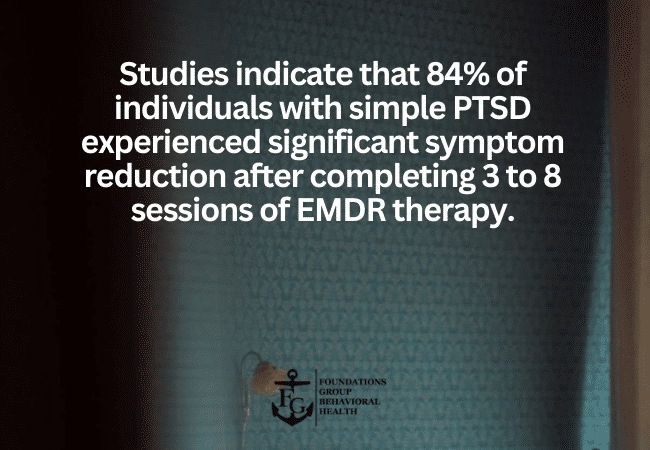Trauma can have lasting effects on both the mind and body, often causing distressing symptoms such as anxiety, depression, PTSD, and emotional dysregulation. While traditional talk therapy can be effective, many trauma survivors find it difficult to revisit painful experiences through conversation alone. Eye Movement Desensitization and Reprocessing (EMDR) is a highly researched, evidence-based therapy that offers a faster and more targeted approach to trauma treatment, helping individuals process distressing memories without being retraumatized.
At Foundations Group Behavioral Health, we integrate EMDR therapy into our Trauma Disorder Treatment Program, as well as Psychiatric Day Treatment, Half-Day Treatment Programs, and Outpatient Mental Health Programs. Our approach ensures that individuals receive comprehensive, trauma-informed care tailored to their specific needs.
This guide explores how EMDR works, why it’s effective, and how it can help individuals recover from trauma, anxiety, depression, ADHD, and co-occurring disorders.
What is EMDR Therapy?
Eye Movement Desensitization and Reprocessing (EMDR) is a structured, evidence-based therapy developed by Dr. Francine Shapiro in 1987. Unlike traditional therapies that focus on verbal discussion, EMDR targets how traumatic memories are stored in the brain, using bilateral stimulation (eye movements, tapping, or sounds) to help individuals process and desensitize distressing experiences.
The Science Behind EMDR
When trauma occurs, the brain may struggle to properly process and store the memory, leaving individuals with lingering emotional distress, intrusive thoughts, or flashbacks. EMDR helps the brain reprocess these memories, allowing individuals to view them with less emotional intensity and greater clarity.
Studies show that EMDR significantly reduces symptoms of PTSD, anxiety, and depression, helping individuals regain control over their emotions and mental well-being.
The Eight Phases of EMDR Treatment
EMDR therapy follows a structured eight-phase approach designed to help individuals safely process traumatic memories while maintaining emotional stability.
1. History Taking and Treatment Planning
- The therapist assesses the client’s trauma history, symptoms, and treatment goals.
- Identifies specific traumatic memories to be addressed in EMDR sessions.
2. Preparation
- The therapist explains how EMDR works and what to expect.
- Teaches grounding techniques, relaxation exercises, and coping strategies to ensure emotional safety.
3. Assessment
- The client identifies a specific traumatic memory, along with associated thoughts, emotions, and bodily sensations.
- Establishes target memories for processing.
4. Desensitization (Bilateral Stimulation)
- The therapist guides eye movements, hand tapping, or auditory tones while the client recalls the traumatic memory.
- The brain gradually reprocesses the memory, reducing its emotional intensity.
5. Installation of Positive Beliefs
- The therapist helps the client replace negative self-beliefs (e.g., “I am powerless”) with positive beliefs (e.g., “I am in control”).
6. Body Scan
- The client checks for remaining physical tension or emotional distress.
- If discomfort remains, further processing is done.
7. Closure
- The session ends with self-soothing techniques to ensure emotional stability.
8. Reevaluation
- The therapist and client review progress and determine whether additional EMDR sessions are needed.
Why EMDR is Effective for Trauma Treatment
EMDR is one of the most well-researched trauma therapies, endorsed by organizations like the American Psychological Association (APA) and the World Health Organization (WHO).
1. Works with the Brain’s Natural Healing Process
- Trauma can disrupt the brain’s ability to process memories properly.
- EMDR restores healthy processing, allowing traumatic experiences to be resolved naturally.
2. Reduces Emotional Reactivity
- EMDR helps individuals detach emotional distress from traumatic memories.
- Over time, distressing experiences lose their emotional intensity, allowing individuals to move forward.
3. Faster Results Than Traditional Therapy
- Studies show EMDR can significantly reduce PTSD symptoms in fewer sessions compared to talk therapy.
- Many individuals experience substantial improvement within 6-12 sessions.
4. Effective for More Than Just PTSD
While EMDR was initially developed for PTSD, it has proven effective for:
- Anxiety disorders and panic attacks
- Depression and emotional dysregulation
- ADHD-related distress and low self-esteem
- Phobias and fear-based disorders
- Co-occurring trauma and substance use disorders
How EMDR is Used in Mental Health Treatment Programs
At Foundations Group Behavioral Health, EMDR is integrated into various levels of care to ensure individuals receive the right treatment for their trauma and mental health challenges.
1. Psychiatric Day Treatment for Trauma Recovery
- A full-day intensive program for individuals with severe PTSD, panic disorder, or complex trauma.
- Combines EMDR, Cognitive Behavioral Therapy (CBT), Somatic Therapy, and Mindfulness-Based Stress Reduction.
2. Half-Day Treatment Program for Flexible Support
- Structured therapy that allows individuals to receive trauma-focused care while maintaining daily responsibilities.
- Uses EMDR alongside group therapy and individual counseling.
3. Outpatient Mental Health Program for Continued Healing
- Weekly or biweekly therapy sessions integrating EMDR, DBT, and trauma-informed care.
- Provides long-term support for individuals managing trauma-related symptoms.

How to Know If EMDR Is Right for You
EMDR is a great fit for individuals who:
- Struggle with PTSD or past trauma
- Experience flashbacks, intrusive thoughts, or nightmares
- Have anxiety, panic attacks, or phobias related to past experiences
- Feel emotionally stuck or disconnected from their body
- Have co-occurring mental health conditions, such as depression or ADHD
If you are ready to break free from trauma and regain emotional balance, EMDR may be an effective option.
What to Expect After EMDR Therapy
Many individuals report:
- Less emotional distress and fear associated with past trauma
- Increased self-confidence and improved self-beliefs
- Fewer intrusive thoughts and nightmares
- Better emotional regulation and coping skills
- Feeling more present and in control of life
The effects of EMDR are often long-lasting, providing a pathway to lasting healing and empowerment.
Conclusion
Trauma does not have to define your future. EMDR therapy offers a scientifically backed, effective method to help individuals process distressing memories, reduce emotional reactivity, and regain control of their lives.
At Foundations Group Behavioral Health, we offer Psychiatric Day Treatment, Half-Day Treatment Programs, and Outpatient Mental Health Programs, integrating EMDR with other evidence-based therapies for a comprehensive and personalized approach to trauma recovery.
If you’re ready to heal from trauma and reclaim your life, call us today at 888.685.9730 to learn more about our Trauma Disorder Treatment Program and how EMDR can help you move forward. You deserve healing, hope, and a future free from trauma—let’s take the next step together.
FAQ on EMDR Therapy Works
What is EMDR therapy?
Eye Movement Desensitization and Reprocessing (EMDR) is an evidence-based trauma therapy that helps individuals process distressing memories using bilateral stimulation, such as eye movements or tapping, to reduce emotional intensity.
How does EMDR help with trauma?
EMDR works by reprocessing traumatic memories so they are no longer overwhelming. It allows the brain to integrate these memories in a healthier way, reducing symptoms of PTSD, anxiety, and depression.
What conditions can EMDR treat?
EMDR is effective for:
- PTSD and trauma-related disorders
- Anxiety and panic disorders
- Depression and emotional dysregulation
- ADHD-related distress and low self-esteem
- Phobias and fears
- Co-occurring disorders, including substance use and trauma
How long does EMDR therapy take?
The number of sessions varies, but many individuals see improvement within 6-12 sessions. The full treatment process depends on the complexity of trauma and personal healing progress.
What happens during an EMDR session?
A therapist guides the client through an eight-phase treatment process, using bilateral stimulation (eye movements, tapping, or auditory tones) while the client recalls a traumatic memory. Over time, the emotional distress connected to the memory fades, and positive beliefs replace negative ones.
Does EMDR require talking about trauma in detail?
No. Unlike traditional talk therapy, EMDR does not require individuals to recount every detail of their trauma. Instead, the focus is on how the body and brain process the memory rather than reliving the experience.
Is EMDR effective for people who have not responded to other therapies?
Yes. EMDR is especially beneficial for individuals who have struggled with traditional talk therapy. Many people experience symptom relief faster than with conventional therapy approaches.








